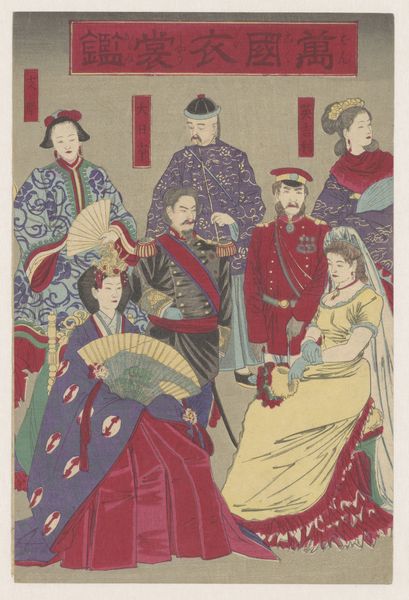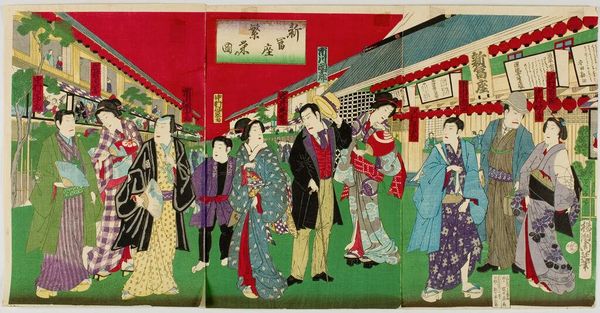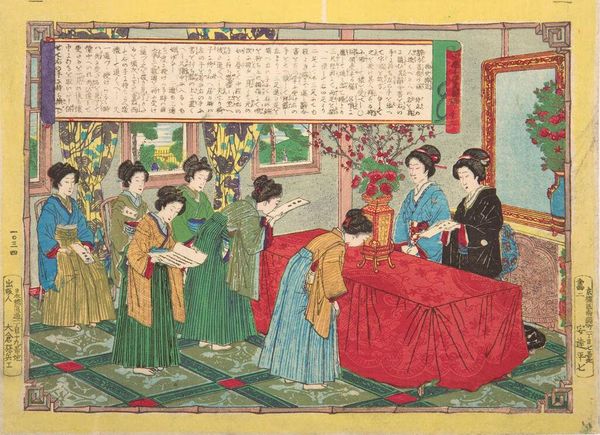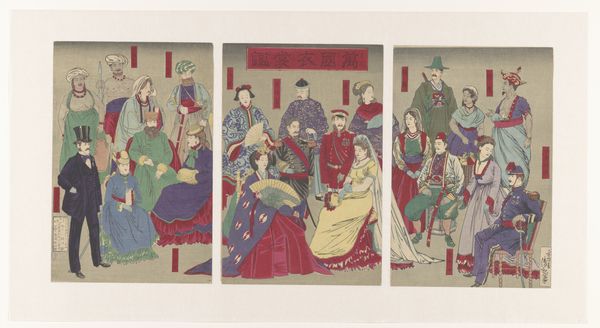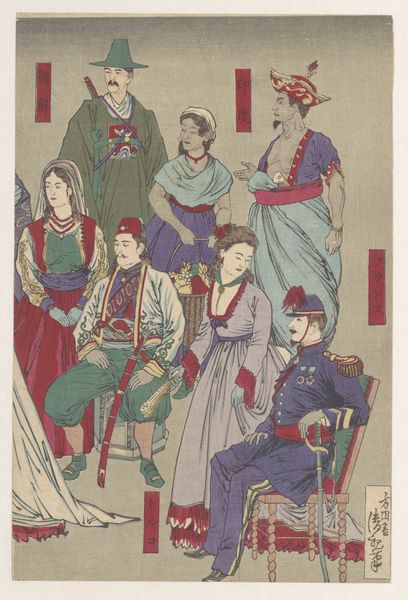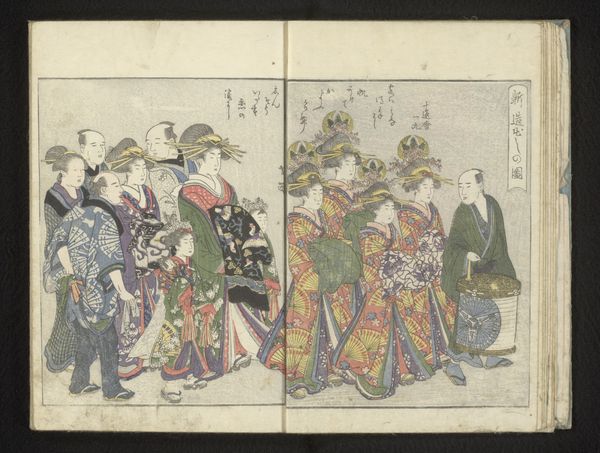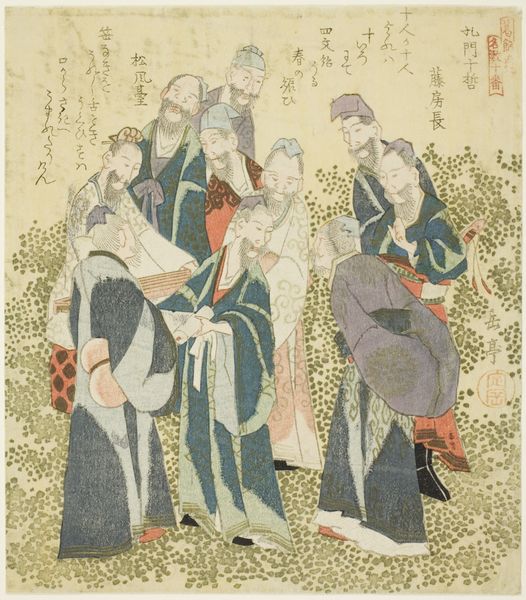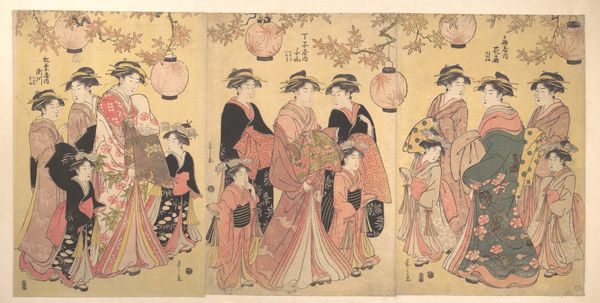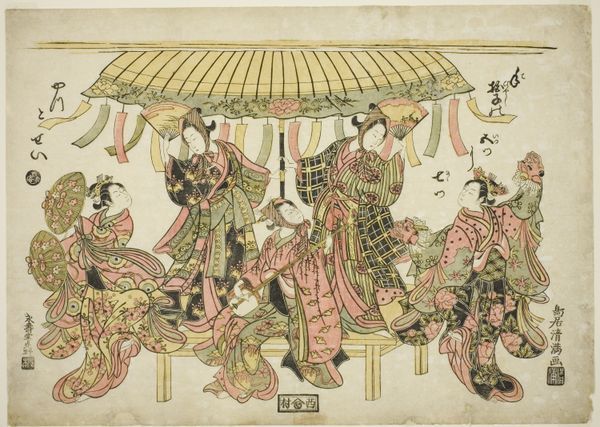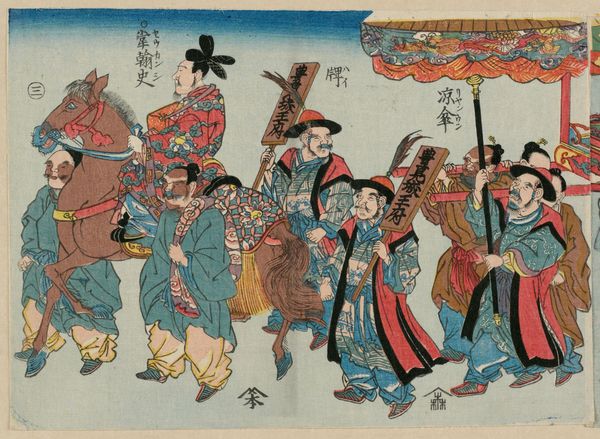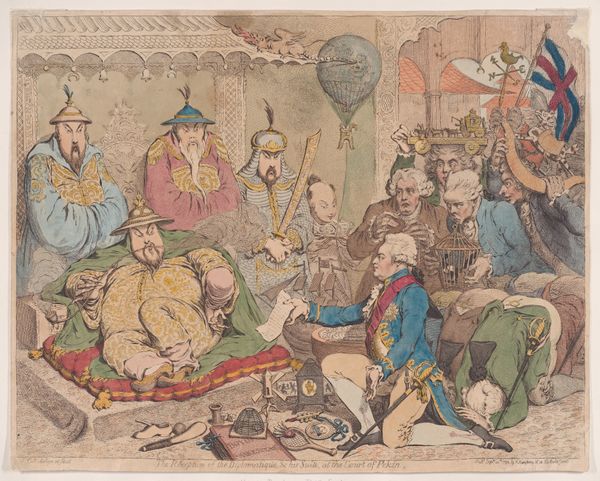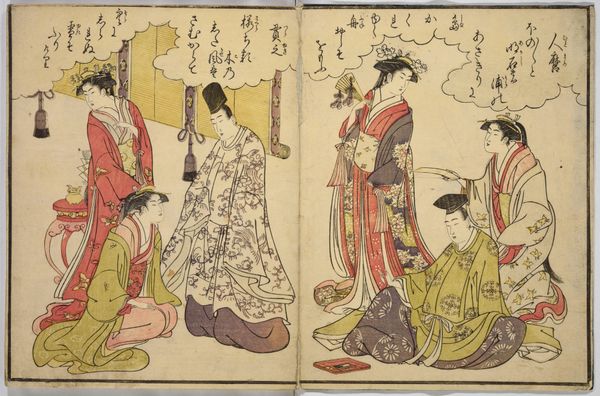
Mirror of National Costumes of All Nations (Bankoku ishō kagami) 1882
0:00
0:00
Dimensions: Image (a): 14 x 9 1/4 in. (35.6 x 23.5 cm) Image (b): 13 7/8 x 9 in. (35.2 x 22.9 cm) Image (c): 14 x 9 1/2 in. (35.6 x 24.1 cm)
Copyright: Public Domain
Editor: This print, "Mirror of National Costumes of All Nations" by Kobayashi Kiyochika, dates to 1882. It's a woodblock print showcasing a diverse group of people in traditional clothing. It almost feels like a staged gathering. What strikes me most is how each figure is presented with equal attention, yet their expressions remain quite neutral. How do you interpret this work? Curator: What you're picking up on is precisely what makes this print so compelling. Beyond just a survey of global attire, Kiyochika's print functions as a commentary on Meiji-era Japan’s relationship with the world. The evenhandedness you observed resists a colonial gaze. What could this mean during a period of intense Westernization? Editor: It’s like… a record without judgment? Almost anthropological? Curator: Exactly! The artist uses the relatively new medium of mass-produced prints, traditionally used for Ukiyo-e or "pictures of the floating world," to document global diversity. This embrace of different cultures challenged entrenched views on national identity. Editor: So, it’s not just about pretty clothes, but about redefining Japan's place among nations. The artist seems to advocate for cultural exchange, or at least acknowledges that the world is bigger. I'm really impressed. Curator: Absolutely! It questions the established social hierarchies of the time. Consider the implied power dynamics here – who gets to define "national costume," and for whom? By democratizing this visual space, Kiyochika subtly subverts traditional power structures. Editor: I never would have thought of that, I see it now as less of an innocent picture, and more of an artistic act of cultural defiance. Thanks! Curator: My pleasure. The work opens up complex issues relating to cross-cultural exchange, power, and representation that are still important now.
Comments
No comments
Be the first to comment and join the conversation on the ultimate creative platform.
